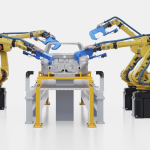March 2025 has ushered in a challenging environment for procurement professionals, characterized by persistent inflation and escalating trade tensions. The U.S. core inflation rate has stabilized at 2.8% over the past 12 months, according to the U.S. Bureau of Labor Statistics. Concurrently, the recent implementation of a 25% tariff on steel and aluminum imports has introduced new complexities for procurement strategies.
Deciphering the Economic Landscape
The stabilization of core inflation at 2.8% suggests a plateau in consumer price increases. However, the imposition of significant tariffs on essential materials like steel and aluminum is anticipated to exert upward pressure on production costs, potentially influencing future inflation metrics. These tariffs, effective from March 12, 2025, aim to protect domestic industries but may lead to increased expenses for sectors reliant on these imports.
Strategic Responses for Procurement Professionals
Expanding Supplier Networks to Reduce Risk
Procurement teams must take decisive action to mitigate risk and contain costs in this volatile landscape. One key response is broadening supply sources to reduce dependence on regions heavily affected by tariffs. By identifying alternative suppliers in untapped markets, businesses can avoid sudden cost spikes and potential supply shortages. This diversification approach has already proven effective for manufacturers navigating past trade disputes, demonstrating its value as a proactive measure.
Building Stronger Supplier Partnerships
Beyond sourcing diversification, strengthening supplier collaboration is essential. Procurement leaders are finding that transparent, long-term partnerships can help mitigate price volatility. Negotiating flexible contracts, securing volume-based pricing agreements, and aligning on shared cost-saving initiatives can ease financial pressure on both sides. As tariffs disrupt traditional supply models, the ability to work closely with key suppliers will separate resilient businesses from those struggling to adapt.
Harnessing Technology for Smarter Procurement
Technology is playing a larger role than ever in navigating inflationary pressures. Advanced data analytics allow procurement teams to forecast market trends, assess supplier performance, and model cost scenarios with greater accuracy. Businesses leveraging AI-driven insights are making faster, data-backed decisions that minimize unnecessary spending and maximize efficiency. In this environment, access to real-time procurement intelligence can mean the difference between absorbing higher costs or successfully offsetting them.
Integrating Sustainability for Long-Term Stability
Sustainability and innovation are also emerging as unexpected cost-containment strategies. Companies investing in circular supply chain models—where materials are reused and repurposed—are reducing dependency on volatile commodity prices. Sustainable sourcing initiatives, such as prioritizing local production or utilizing recycled inputs, are not just ethical choices but increasingly smart financial ones. Procurement teams that embrace sustainability as a hedge against price fluctuations are setting themselves up for long-term stability.
The Road Ahead for Procurement Teams
The economic and trade landscape will continue to evolve, making adaptability a critical skill for procurement professionals. By diversifying supply chains, strengthening supplier relationships, leveraging data-driven insights, and incorporating sustainability initiatives, businesses can protect their margins and remain competitive. Inflation and tariffs may present significant challenges, but with the right strategies in place, procurement teams can turn uncertainty into an opportunity for smarter, more resilient operations.







